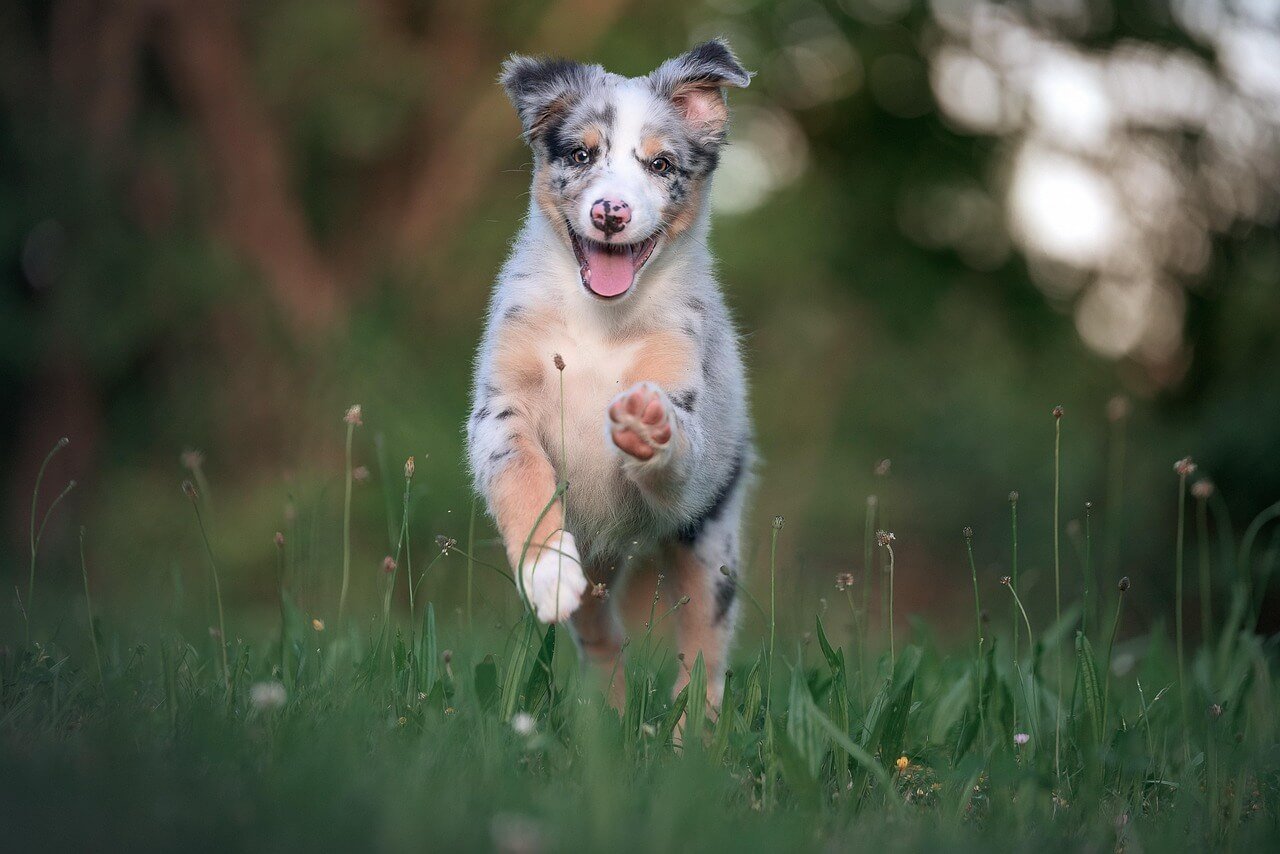Which Dog Has the Weakest Bite Force? Unpacking Canine Strength
When it comes to dogs, bite force is often a topic of fascination. From powerful breeds like Rottweilers and Pit Bulls to gentle giants like Greyhounds, every dog has a unique bite strength that reflects its size, temperament, and purpose. But what about the dogs with the weakest bite force? While most people focus on the strongest biters, understanding which dogs have the gentlest jaws can be just as intriguing.
In this blog post, we’ll explore the breeds with the weakest bite force, why their jaws are less powerful, and how this impacts their behavior and role in our lives. Whether you’re a dog lover or simply curious about canine biology, this guide will provide fascinating insights into the softer side of our furry friends.
Breeds with the Weakest Bite Force: Gentle Giants and Tiny Companions
The weakest bite force in dogs is typically found in smaller, more docile breeds or those bred for companionship rather than guarding or hunting. These dogs may not have the jaw power of larger breeds, but their gentleness makes them perfect family pets. Here’s a look at some breeds with notably weak bite forces.
Greyhound:
Known for their speed and elegance, Greyhounds have a surprisingly gentle bite force due to their slender build and calm demeanor.Pug:
Despite their playful nature, Pugs have small jaws and a low bite force, making them one of the least intimidating breeds.Shih Tzu:
These tiny dogs were bred for companionship, resulting in a bite force that’s more suited for cuddling than biting.Bichon Frise:
With their cheerful personalities and small size, Bichon Frises have a minimal bite force that matches their gentle nature.Cavalier King Charles Spaniel:
This affectionate breed is known for its soft mouth, making it ideal for families with children.
These breeds prove that a weak bite force doesn’t mean a lack of personality or charm. In fact, their gentle jaws often make them some of the most beloved companions in the canine world.
Why Do Some Dogs Have Weaker Bite Forces? Factors That Influence Jaw Strength
A dog’s bite force is influenced by a variety of factors, including genetics, size, and purpose. Understanding these elements helps explain why some breeds have weaker jaws than others. Let’s break down the key reasons behind a weak bite force.
Small Size:
Smaller dogs naturally have less muscle mass in their jaws, resulting in a weaker bite force compared to larger breeds.Breed Purpose:
Breeds bred for companionship or herding tend to have weaker bite forces, as their roles don’t require aggressive jaw strength.Temperament:
Gentle and docile breeds often have softer mouths, reflecting their calm and non-aggressive nature.Skull Structure:
The shape and structure of a dog’s skull can impact jaw strength, with flatter skulls often correlating to weaker bites.Evolutionary Traits:
Over generations, certain breeds have been selectively bred to minimize aggression and biting tendencies, leading to weaker jaws.
These factors highlight the diversity in canine biology and how different breeds have adapted to their roles and environments. A weak bite force is often a reflection of a breed’s history and intended purpose.
Check this guide 👉Labrador Bite Force: Best 7 Expert Tips!
Check this guide 👉Rottweiler Bite Force: Best 7 Expert Tips!
Check this guide 👉Cane Corso Dog Bite Force: Best 7 Expert Tips!

Breeds with Weak Bite Force | Reasons for Weak Bite Force |
|---|---|
Greyhound | Slender build and calm temperament |
Pug | Small size and companion-focused |
Shih Tzu | Bred for affection, not aggression |
Bichon Frise | Playful and gentle nature |
Cavalier King Charles Spaniel | Soft mouth and family-friendly traits |
How Does a Weak Bite Force Impact a Dog’s Role?
A dog’s bite force plays a significant role in determining its suitability for specific tasks or roles. For breeds with weak bite forces, their gentle jaws often align with their intended purposes. Here’s how a weak bite force influences a dog’s role.
Companion Animals:
Dogs with weak bite forces are often chosen as family pets due to their gentle and affectionate nature.Therapy Dogs:
Their calm demeanor and soft mouths make them ideal candidates for therapy work, where they interact closely with people.Herding Assistants:
Some herding breeds use their presence rather than their bite to manage livestock, relying on communication over force.Indoor Living:
Breeds with weak bite forces are often better suited for apartment living, as they pose less risk of accidental injury.Training Compatibility:
Their gentle nature makes them highly trainable and responsive to positive reinforcement techniques.
A weak bite force doesn’t limit a dog’s potential; instead, it enhances their ability to excel in roles that prioritize kindness and companionship.
Misconceptions About Weak Bite Force Breeds
Despite their gentle jaws, dogs with weak bite forces are often misunderstood. Let’s debunk some common misconceptions about these breeds and their capabilities.
Myth: Weak Bite Force Means Weak Personality:
While their jaws may be gentle, many of these breeds have bold and confident personalities.Myth: They Can’t Protect You:
Even though their bite force is weak, many small breeds are excellent watchdogs due to their alertness and vocal nature.Myth: They’re Not Athletic:
Breeds like Greyhounds prove that a weak bite force doesn’t equate to a lack of athleticism or energy.Myth: They’re Less Intelligent:
Many gentle-jawed breeds, such as the Cavalier King Charles Spaniel, are highly intelligent and eager to learn.Myth: They’re Not Suitable for Families:
On the contrary, their gentle nature makes them some of the best family pets available.
By dispelling these myths, we can better appreciate the unique qualities of dogs with weak bite forces and recognize their value as loving companions.
Benefits of Owning a Dog with a Weak Bite Force
Owning a dog with a weak bite force comes with several advantages, especially for first-time pet owners or families with children. Here’s why these breeds make wonderful companions.
Safety Around Children:
Their gentle jaws reduce the risk of accidental bites, making them ideal for households with kids.Ease of Training:
Many gentle-jawed breeds respond well to positive reinforcement and enjoy learning new tricks.Low Aggression Levels:
These dogs are typically less aggressive, creating a peaceful and harmonious home environment.Adaptability to Small Spaces:
Breeds with weak bite forces are often small or medium-sized, making them perfect for apartments or urban living.Affectionate Nature:
Their loving personalities ensure they form strong bonds with their human families.
These benefits highlight why dogs with weak bite forces are cherished by so many pet owners around the world.
Fun Facts About Weak Bite Force Breeds
Here are some interesting tidbits about breeds with weak bite forces that showcase their unique qualities.
Greyhounds Are Speed Demons:
Despite their weak bite force, Greyhounds are one of the fastest dog breeds, capable of reaching speeds up to 45 mph.Pugs Snore Loudly:
Their flat faces contribute to their weak bite force and also result in adorable snoring sounds during sleep.Shih Tzus Were Royal Pets:
Historically, Shih Tzus were bred as companions for Chinese royalty, emphasizing their gentle and affectionate traits.Bichon Frises Love Tricks:
Their intelligence and eagerness to please make them excellent performers in agility competitions.Cavaliers Excel in Therapy Work:
Their calm and comforting presence makes them top choices for emotional support roles.
These fun facts reveal the delightful quirks and talents of breeds with weak bite forces.
Tips for Caring for a Dog with a Weak Bite Force
Proper care ensures that your gentle-jawed dog stays healthy and happy throughout their life. Here are some tips tailored to their unique needs.
Regular Dental Checkups:
Even with a weak bite force, maintaining good oral hygiene is crucial for preventing dental issues.Provide Soft Toys:
Avoid hard toys that could damage their teeth; opt for soft, chewable alternatives instead.Monitor Weight:
Smaller breeds are prone to obesity, so ensure they get enough exercise and a balanced diet.Socialize Early:
Proper socialization helps prevent fear-based behaviors that could lead to unnecessary biting.Focus on Positive Reinforcement:
Reward-based training methods work best for these sensitive and eager-to-please breeds.
Following these tips ensures your dog remains a joyful and healthy part of your family for years to come.
Frequently Asked Questions About Dogs with Weak Bite Forces
Which dog breed has the weakest bite force?
The Greyhound is often cited as having one of the weakest bite forces among dog breeds.
Does a weak bite force mean a dog is less dangerous?
Yes, generally speaking, dogs with weak bite forces are less likely to cause serious harm, but proper training and socialization are still essential.
Can a dog’s bite force change over time?
A dog’s bite force is largely determined by genetics, but factors like age, health, and dental condition can influence it.
Are small dogs always gentle biters?
Not necessarily, but small breeds are more likely to have weaker bite forces due to their size and anatomy.
How is bite force measured?
Bite force is typically measured in PSI (pounds per square inch) using specialized equipment.
The Gentle Side of Canines: Celebrating Dogs with Weak Bite Forces
Dogs with weak bite forces remind us that strength isn’t always measured in pounds per square inch. Their gentle jaws, combined with their loving and loyal personalities, make them exceptional companions for families, therapy work, and more. By understanding the factors that contribute to their weaker bite forces, we can appreciate the diversity of the canine world and the unique roles each breed plays. Whether you’re looking for a cuddly lapdog or a graceful athlete, there’s a gentle-jawed breed out there that’s perfect for you. So next time you meet a Greyhound or a Pug, remember that their soft bite doesn’t diminish their big hearts.
Dog Scared of Cars: Best 7 Expert Tips! Discover effective strategies to help your dog overcome car-related fears and build confidence safely.
How to Teach Your Dog to Clean Up Toys: Best 7 Tips! Discover easy steps and expert advice to train your dog effectively. Transform playtime into cleanup fun!
Food for Dogs with No Teeth: Best 7 Expert Tips! Discover soft, nutritious meal ideas and feeding strategies to keep your toothless pup healthy and happy. Perfect for seniors!
Where Is the Expiration Date on Dog Food? Best 7 Tips! Discover expert advice on finding, understanding, and managing dog food expiration dates to keep your pet safe and healthy.





